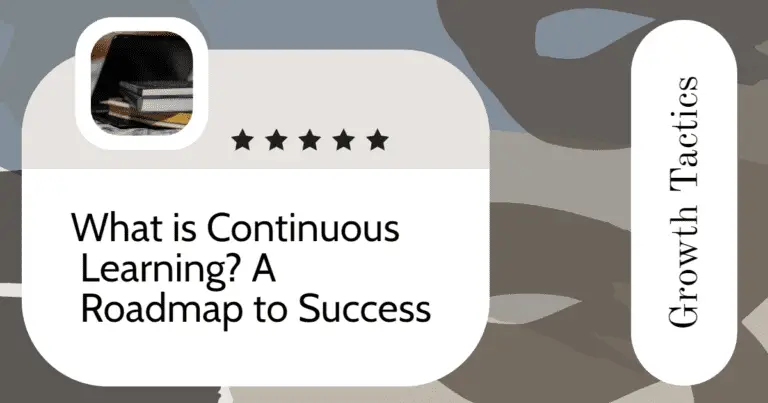If you’ve ever found yourself in a conversation that wasn’t going your way, you might have noticed your opponent resorting to some illogical arguments. Logical fallacies are errors in reasoning that make arguments weak or unsound. It’s important to be able to recognize logical fallacies, both to avoid using them in your own argumentation and to be able to counter them when you encounter them. In this article, we’ll explain what a logical fallacy is, what the most common logical fallacies are, and how to avoid them.
Jump To Section
What Is a Logical Fallacy?
Simply put, a logical fallacy is an error in reasoning. It’s a defect in an argument that makes it unsound or weak. Just because an argument contains a logical fallacy doesn’t automatically mean the conclusion is false, but it means that the argument itself is flawed.
A logical fallacy is an argument that relies on a mistake in reasoning rather than on true evidence. There are many types of logical fallacies ranging from informal fallacies such as Ad Hominem or Straw Man to Material Fallacies like False Dilemmas. Understanding the types and their implications will allow you to spot them when they occur in everyday conversation and online debates.
Logical fallacies can easily undermine a logical conclusion if you are not careful. That’s why it’s important to know what they are, how they work, and how to spot them. By avoiding logical fallacies you can make strong, valid arguments that support your overall point.
Why People Use Logical Fallacies
Some people use them on purpose to win arguments, while others do it without realizing it. Fallacies can be tricky that way.
They often appeal to our emotions, making us feel right even when we’re not. For example, an appeal to popularity might make us feel good because we’re part of a group.
But just because something is popular doesn’t make it true. I’ve learned that understanding why we use fallacies helps us avoid them. It’s all about being aware and thinking clearly.
What Are the Most Common Logical Fallacies?
Here are some of the most common logical fallacies you’re likely to encounter:
Ad Hominem Fallacy
An ad hominem fallacy occurs when instead of arguing against someone’s actual argument, you attack the person making that argument. For example, “You can’t trust what they’re saying, they’re just a bunch of criminals.”
Overcoming Ad Hominem Fallacy
When encountering an ad hominem fallacy, it’s important to address the attack on the person rather than the substance of their argument. Here’s a strategy to overcome this fallacy:
- Stay focused on the argument: Refrain from responding directly to the personal attack. Instead, redirect the conversation back to the actual argument being made.
- Acknowledge the fallacy: Politely point out the ad hominem fallacy and explain why attacking the person does not address the validity of their argument. For example, you can say, “I understand that you may have concerns about the person making the argument, but it’s important to evaluate the argument itself based on its merits.”
- Ask for evidence or reasoning: Request evidence or logical reasoning that supports their claim or challenges the argument. Encourage them to provide substantive counterarguments instead of relying on personal attacks.
- Focus on the facts and evidence: Emphasize the importance of relying on evidence, facts, and logical reasoning to evaluate arguments. Remind the person that attacking the person making the argument does not discredit the argument itself.
- Refocus the discussion: Steer the conversation back to the actual argument and discuss the relevant points. Encourage a constructive and respectful dialogue based on the merits of the argument rather than personal attacks.
Straw Man Fallacy
A straw man fallacy is when someone misrepresents an argument to make it easier to attack. It’s like creating a fake argument to knock down instead of engaging with the real argument. For example, if someone is arguing that it might be a good idea to reduce military spending, and you respond by saying “You just want to weaken our national defense,” you’re creating a straw man to attack.
Overcoming Straw Man Fallacy
When someone uses a straw man fallacy, it’s important to address the misrepresentation of the argument and redirect the discussion back to the actual argument. Here’s a strategy to overcome this fallacy:
- Clarify the actual argument: Restate the original argument in clear and concise language to make sure everyone understands it correctly. This will help prevent further misrepresentation of the argument.
- Identify the straw man: Politely point out the straw man fallacy and explain how the argument has been misrepresented. Be specific and provide evidence or examples to support your claim.
- Correct the misrepresentation: Refute the misrepresentation of the argument and explain why it’s inaccurate. Use evidence, facts, and logical reasoning to support your case.
- Redirect the discussion: Once the misrepresentation has been corrected, steer the conversation back to the original argument. Focus on the relevant points and encourage a constructive and respectful dialogue based on the merits of the argument.
- Avoid using straw man fallacies: Finally, avoid using straw man fallacies in your own argumentation. Make sure you accurately represent the other person’s argument and engage with it directly. This will help foster a productive and rational discussion.
False Dilemma or False Dichotomy Fallacy
This is when someone argues that there are only two options and one must be true without considering other possible options. For example, “You’re either for us or against us.”
Overcoming False Dilemma or False Dichotomy Fallacy
When someone presents a false dilemma or false dichotomy fallacy, it’s important to point out that there are other options to consider. Here’s a strategy to overcome this fallacy:
- Identify the false dilemma: Politely point out that the argument is presenting a false dilemma by only presenting two options without considering other possibilities.
- Provide alternative options: Provide other possible options that could exist beyond the two options presented. This will allow for a more complete and nuanced discussion of the issue, and encourage a more open-minded approach to finding a solution.
- Challenge the either/or assumption: Question the assumption that only one of the two options presented must be chosen. Explain that there may be benefits and drawbacks to both options or that there may be a third option that addresses both concerns.
- Provide evidence or reasoning for alternative options: Offer logical reasoning or present evidence that supports the alternative options you are proposing. This will help demonstrate that there are viable alternatives to the two options presented in the false dilemma.
- Encourage further discussion: Encourage further discussion and exploration of alternative options. Emphasize the importance of considering all possible solutions in order to find the best outcome.
Bandwagon Fallacy
This is when someone argues that because a lot of people believe something, it must be true. It’s also sometimes called an appeal to popularity. For example, “Everyone knows that climate change isn’t real.”
Overcoming Bandwagon Fallacy
When someone uses the bandwagon fallacy, it’s important to remind them that the popularity of an idea or belief does not necessarily make it true. Here’s a strategy to overcome this fallacy:
- Acknowledge the popularity of the belief: Start by acknowledging that many people may hold the belief in question. This will help establish common ground and prevent defensiveness.
- Question the legitimacy of popularity: Politely explain that the popularity of a belief does not necessarily make it true. Use specific examples to illustrate how popularity can be a poor indicator of truth.
- Request evidence or reasoning: Ask for evidence or logical reasoning behind the belief, rather than relying on popularity as the sole justification. Encourage the person to question their own beliefs and evaluate them critically.
- Provide evidence or counterarguments: Offer evidence or counterarguments that challenge popular belief. Use facts, statistics, or logical reasoning to support your case.
- Encourage independent thinking: Finally, encourage independent thinking and critical evaluation of information. Emphasize the importance of evaluating beliefs based on their own merits, rather than relying on popularity.
Tu Quoque Fallacy
This is when someone argues that because the opponent is inconsistent or has done something wrong in the past, they are therefore wrong now. For example, “You can’t say lying is bad when you lied to me last week.”
Overcoming Tu Quoque Fallacy
When someone uses the tu quoque fallacy, it’s important to point out that the opponent’s previous behavior does not necessarily invalidate their current argument. Here’s a strategy to overcome this fallacy:
- Identify the tu quoque fallacy: Politely point out that the argument is making a tu quoque or “you too” fallacy by suggesting that the opponent’s past behavior invalidates their current argument.
- Clarify the current argument: Ask the opponent to clarify their current argument and provide evidence or reasoning to support it. This will shift the focus away from past behavior and back onto the current issue.
- Address the past behavior: Acknowledge the opponent’s past behavior without letting it detract from the current argument. Explain that while past behavior may be relevant, it does not necessarily invalidate the current argument.
- Provide alternative evidence or reasoning: Offer alternative evidence or reasoning that supports the current argument. This will help demonstrate that the argument has merit based on its own merits, rather than relying on the opponent’s behavior.
- Encourage constructive dialogue: Encourage constructive dialogue that focuses on the current issue and its merits. Emphasize the importance of evaluating arguments based on evidence and sound reasoning, rather than personal attacks or past behavior.
Sunk Cost Fallacy
This is when someone argues that because they have invested time or money in something, they must continue to invest even if it no longer makes sense to do so. For example, “I can’t stop going to this gym, I’ve already paid for a year.”
Overcoming Sunk Cost Fallacy
When someone uses the sunk cost fallacy, it’s important to remind them that continuing to invest in something that no longer makes sense is irrational. Here’s a strategy to overcome this fallacy:
- Acknowledge the investment: Start by acknowledging the investment that has been made, whether it’s time, money, or resources. This will validate the person’s efforts and make them more receptive to your argument.
- Separate past investment from future gain: Explain that the investment that has been made is in the past, and cannot be regained. Future decisions should be based on the potential gains and losses, rather than past investments.
- Evaluate the potential gain or loss: Encourage the person to evaluate the potential gain or loss associated with continuing the investment. Compare the benefits of the investment against the costs or drawbacks, and determine whether the investment is still worthwhile.
- Consider alternatives: If the investment no longer makes sense, consider alternatives that would be more beneficial. Evaluate other options that would provide a better return on investment, and consider the potential risks and rewards associated with each.
- Make a rational decision: Based on the evaluation of potential gain or loss and alternatives, make a rational decision that is not influenced by past investment. Consider the decision to be a new investment, rather than a continuation of the existing one.
Slippery Slope Fallacy
This is when someone argues that if we allow one thing to happen, then it will lead us down a slippery slope to something much worse. For example, “If we let them teach evolution in schools, they’ll be teaching kids to worship Satan next.”
Overcoming Slippery Slope Fallacy
When someone uses the slippery slope fallacy, it’s important to point out that their argument is based on a series of assumptions that may not be true. Here’s a strategy to overcome this fallacy:
- Clarify the argument: Ask the person to clarify their argument and explain the specific steps that would lead from one thing to another. This will help identify the assumptions that are being made.
- Challenge the assumptions: Challenge the assumptions that underlie the slippery slope argument. Ask for evidence or reasoning to support each assumption, and explain why they may not be valid.
- Offer alternative possibilities: Offer alternative possibilities that do not lead down the slippery slope. Explain that there are many potential outcomes, and it’s important to evaluate each one based on its own merits, rather than relying on assumptions.
- Evaluate each step separately: Evaluate each step separately and consider the potential consequences of each. Avoid assuming that one step will inevitably lead to another, and consider each step as a separate decision.
- Consider the big picture: Consider the big picture and evaluate the overall consequences of each decision. Take into account the potential benefits and drawbacks of each decision, and make an informed decision based on the available information.
Hasty Generalization Fallacy
This is when someone makes a generalization based on inadequate or insufficient evidence. For example, “All politicians are corrupt.” This is a strong and biased claim and not proven with facts and can be overly broad.
Overcoming Hasty Generalization Fallacy
When someone uses a hasty generalization, it’s important to point out the lack of sufficient evidence to support their claim. Here’s a strategy to overcome this fallacy:
- Identify the generalization: Begin by identifying the generalization that has been made. Clearly state the claim and highlight that it applies to an entire group or category of people or things.
- Request specific evidence: Ask the person to provide specific evidence to support their generalization. Encourage them to provide concrete examples, statistics, or other data that demonstrates the validity of their claim.
- Challenge the scope of the claim: Point out that the generalization made may be overly broad and does not account for individual variations within the group. Explain that it is unfair and inaccurate to make sweeping statements about an entire group based on the actions or characteristics of a few members.
- Highlight counterexamples: Provide counterexamples that challenge the generalization. Identify instances where the claim does not hold true and showcase individuals or situations that contradict the generalization being made.
- Encourage nuanced thinking: Emphasize the importance of considering individual differences and nuances within the group. Encourage the person to evaluate each member or situation on its own merits, rather than making assumptions based on the generalization.
Appeal to Ignorance Fallacy
This fallacy occurs when someone argues that something must be true because it hasn’t been proven false. For example, “No one has proved that ghosts don’t exist, so they must be real.”
Overcoming Appeal to Ignorance Fallacy
When someone uses an appeal to ignorance fallacy, it’s important to highlight the flawed reasoning behind their argument. Here’s a strategy to overcome this fallacy:
- Clarify the burden of proof: Explain that the burden of proof lies on the person making the claim. In this case, the burden of proof lies with the person asserting the existence of ghosts. It is not the responsibility of others to disprove their claim.
- Highlight the absence of evidence: Emphasize that the lack of evidence or proof does not validate a claim. Just because something has not been proven false does not mean it is automatically true. Without substantial evidence supporting the existence of ghosts, it is not reasonable to assume they are real.
- Explain the need for positive evidence: Stress the importance of positive evidence in supporting a claim. An appeal to ignorance is not a valid basis for establishing the truth of a statement. Encourage the person to seek out affirmative evidence that supports their claim instead.
- Consider alternative explanations: Explore alternative explanations or hypotheses that could account for the perceived phenomena. Suggest that the person investigate other possibilities or theories that may provide more evidence-based explanations for the experiences attributed to ghosts.
- Promote critical thinking: Encourage the person to approach the topic with critical thinking and skepticism. Remind them that it is important to base beliefs and conclusions on compelling evidence rather than relying on gaps in knowledge or lack of evidence to support a claim.
How to Avoid Logical Fallacies
Let’s talk about avoiding logical fallacies. I’ve spent years honing my arguments, and I’ve learned a thing or two about steering clear of these pesky thinking traps. Here’s how you can do it too:
Know Your Enemy
First things first: you need to understand what logical fallacies are. Think of them as sneaky tricks our brains play on us. I like to imagine them as potholes on the road to clear thinking. Once you can spot these potholes, you’ll be able to drive around them.
Do Your Homework
When I’m building an argument, I always start with research. It’s like gathering ingredients before cooking a meal. You want the best, freshest ingredients, right? Same goes for information. Look for solid facts from trustworthy sources.
Keep It Simple and Clear
Your argument should be like a laser beam, focused and bright. I’ve found that the clearest arguments are often the strongest. Say exactly what you mean, no more, no less. It’s like giving directions: you want to be precise, not confusing.
Back It Up
Use logic and facts to support your point. It’s like building a house, you need a strong foundation. I always try to include real-life examples or statistics. They’re the bricks that make your argument solid.
Consider the Other Side
I used to ignore opposing viewpoints, but I’ve learned that’s a mistake. Now, I look at counterarguments. It’s like playing chess, you need to think about your opponent’s moves. Just make sure you’re representing their views fairly.
Keep Your Cool
Emotions can cloud our judgment. I’ve fallen into this trap before, getting all fired up in an argument. But now I try to stay calm and stick to the facts. It’s not always easy, but it’s worth it.
Be Open to Change
This one’s tough but important. If new evidence shows you’re wrong, be ready to change your mind. I’ve had to do this a few times, and while it’s not fun, it’s how we grow and learn.
Focus on Clarity, Not Winning
Remember, the goal isn’t to “win” an argument. It’s to make your point clear. I always aim to explain my position well, not to beat someone. It’s about understanding, not defeating.
By following these steps, you’ll be well on your way to avoiding logical fallacies. It takes practice, but trust me, it’s worth it. Clear thinking leads to better decisions in all areas of life.
Conclusion
Logical fallacies are errors in reasoning that can make arguments weak or unsound. They can be difficult to spot, but understanding the most common types of logical fallacies can help you avoid using them in your own argumentation and can help you counter them when you encounter them. To avoid using logical fallacies, start by gathering evidence to support your argument, use logical reasoning, be willing to change your mind, and keep your emotions in check.
Remember that making a strong argument isn’t about winning, it’s about making your position clear. By avoiding logical fallacies and making a solid argument supported by evidence, you will be able to make your point effectively and persuade others to see things from your point of view.
Key Takeaways
- Logical fallacies are errors in reasoning that can make arguments weak or unsound.
- Common logical fallacies include Ad Hominem, Straw Man, False Dilemma, Bandwagon, Tu Quoque, Sunk Cost, Slippery Slope, Hasty Generalization, and Appeal to Ignorance.
- To avoid using logical fallacies, gather reliable evidence, use logical reasoning, be willing to change your mind, keep your emotions in check, and focus on making a clear and effective argument.
- Making a strong argument isn’t about winning, it’s about making your position clear and supporting it with evidence.
FAQ
Q: What exactly is a logical fallacy?
A: A logical fallacy is a mistake in reasoning. It’s like a pothole in the road of clear thinking. I often explain it to my friends as a trick our brain plays on us, making an argument seem stronger than it really is.
Q: Are people who use logical fallacies trying to trick me?
A: Not always. In my experience, many people use fallacies without realizing it. I’ve done it myself! Sometimes we use them because they feel right, even when they’re not logically sound.
Q: How can I spot a logical fallacy?
A: Great question! I’ve found that the best way is to learn about different types of fallacies. Once you know what to look for, they’re easier to spot. It’s like learning to identify birds – the more you know, the easier it gets.
Q: Can logical fallacies ever be useful?
A: While they’re not good for making sound arguments, fallacies can be useful in creative thinking or humor. I sometimes use them when brainstorming to think outside the box. Just remember not to rely on them for serious decision-making!
Q: What should I do if someone uses a fallacy in an argument with me?
A: I’ve been in this situation many times. My advice? Stay calm and point out the fallacy gently. Explain why it’s not a valid argument. Remember, the goal is understanding, not winning.
Q: Can I completely avoid using logical fallacies?
A: It’s tough to avoid them completely. I still catch myself using them sometimes. The key is to be aware and keep learning. Don’t be too hard on yourself, we’re all human!








